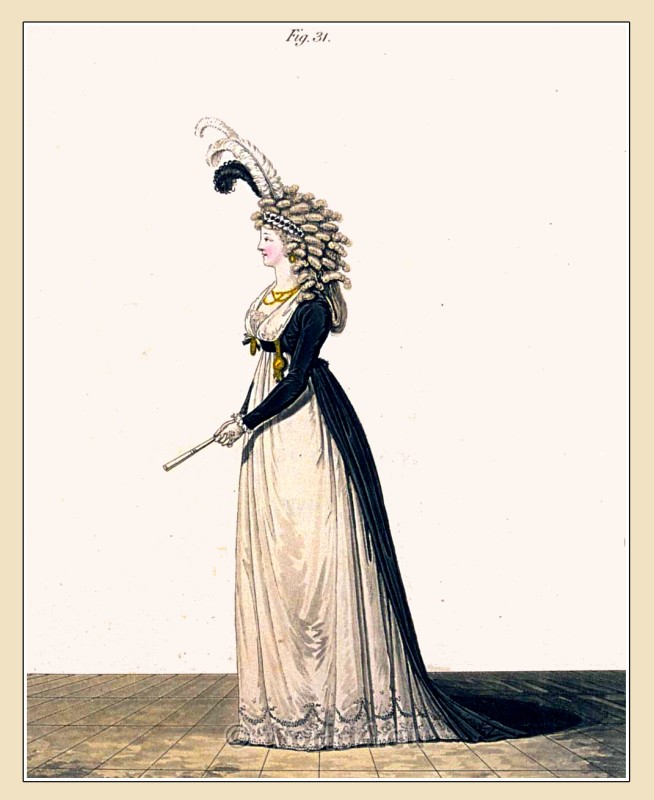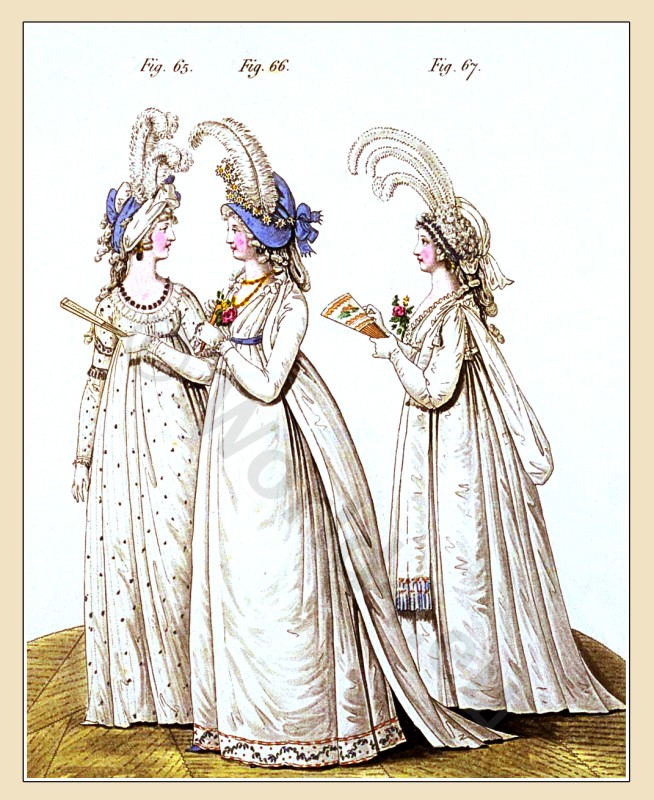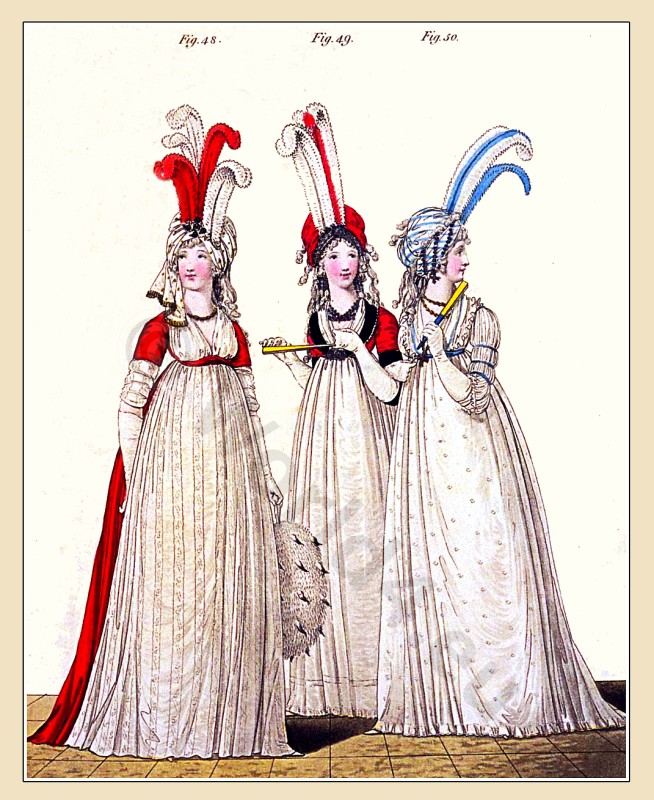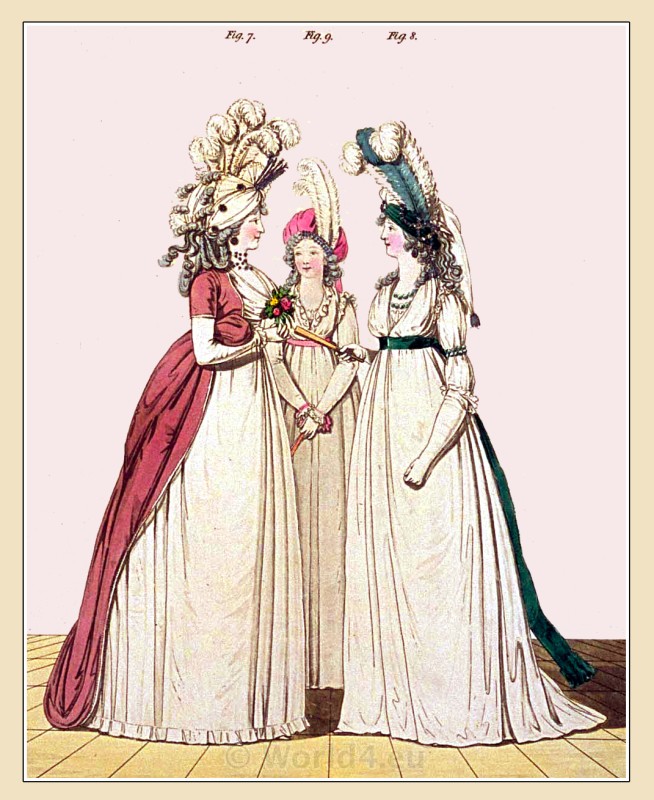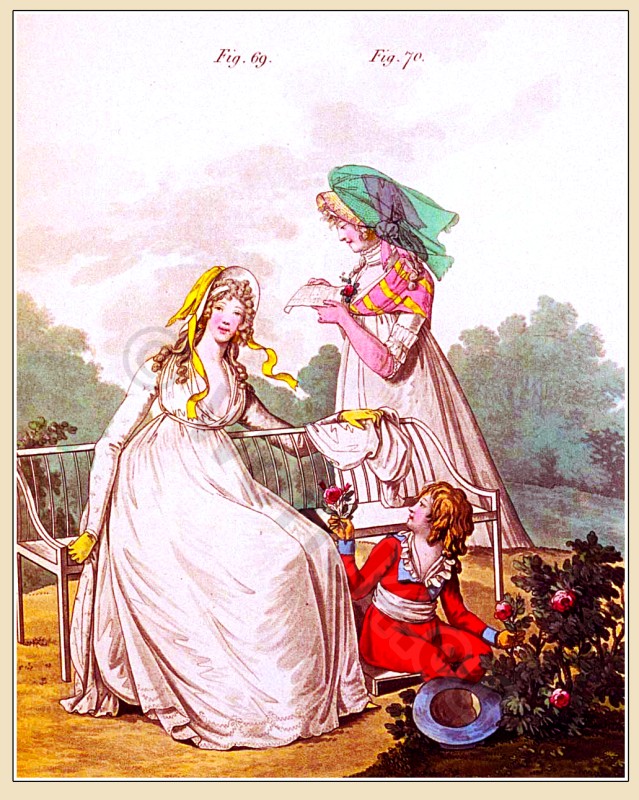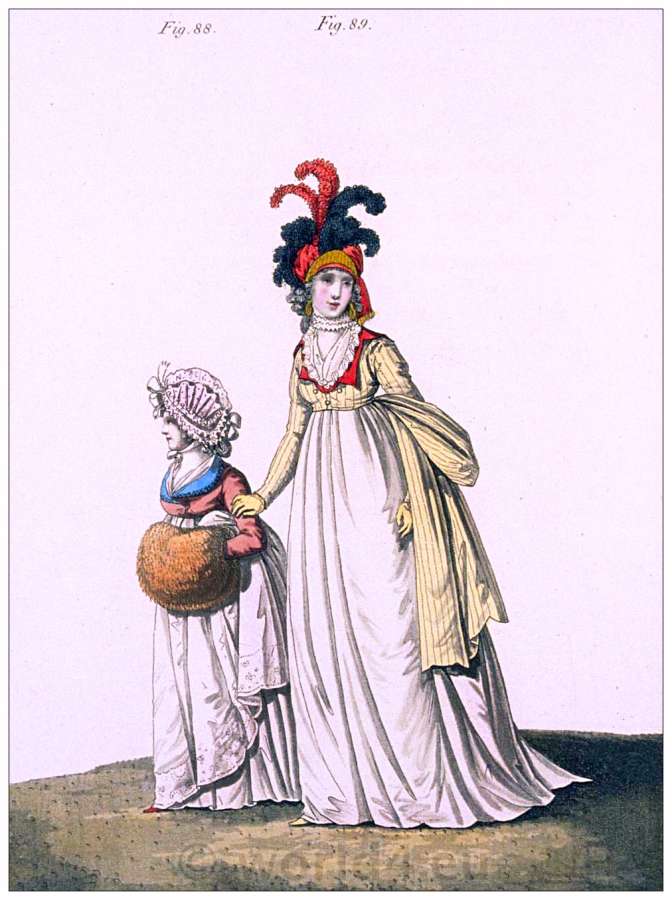Afternoon dress in half mourning. Robe à la Turque of black taffeta.
The Gallery of Fashion. November 1794. Published by Nikolaus von Heideloff, London.
FIG. XXXI.
HEAD-DRESS. Toupee and side hair frizzed and thrown into large curls; bandeau of white and black riband, cut out and formed into a wreath of flowers; one black and two white ostrich feathers placed in the front. Plain chignon, falling very low upon the back. Petticoat of clear lawn, embroidered in black.
Robe à la Turque of black taffeta, with black braids on the back. Long sleeves. Handkerchief of Italian gauze, put within the robe. Gold festoon necklace and ear-rings. White gloves and shoes, embroidered in black.
Source: THE GALLERY OF FASHION Vol. 1,. April 1794 to March 1795. Published by Nikolaus von Heideloff, London.

